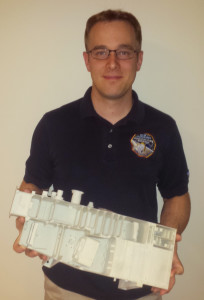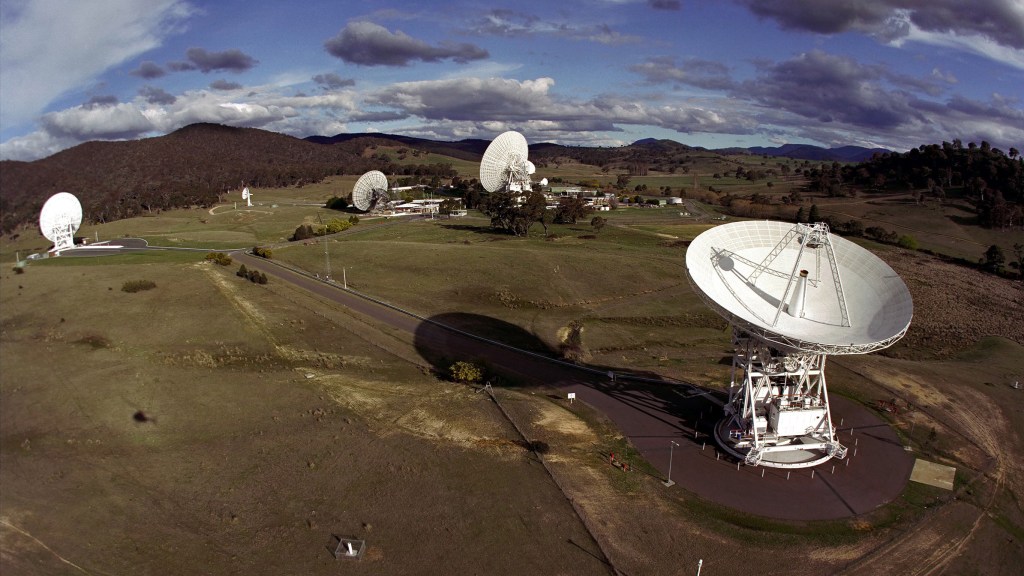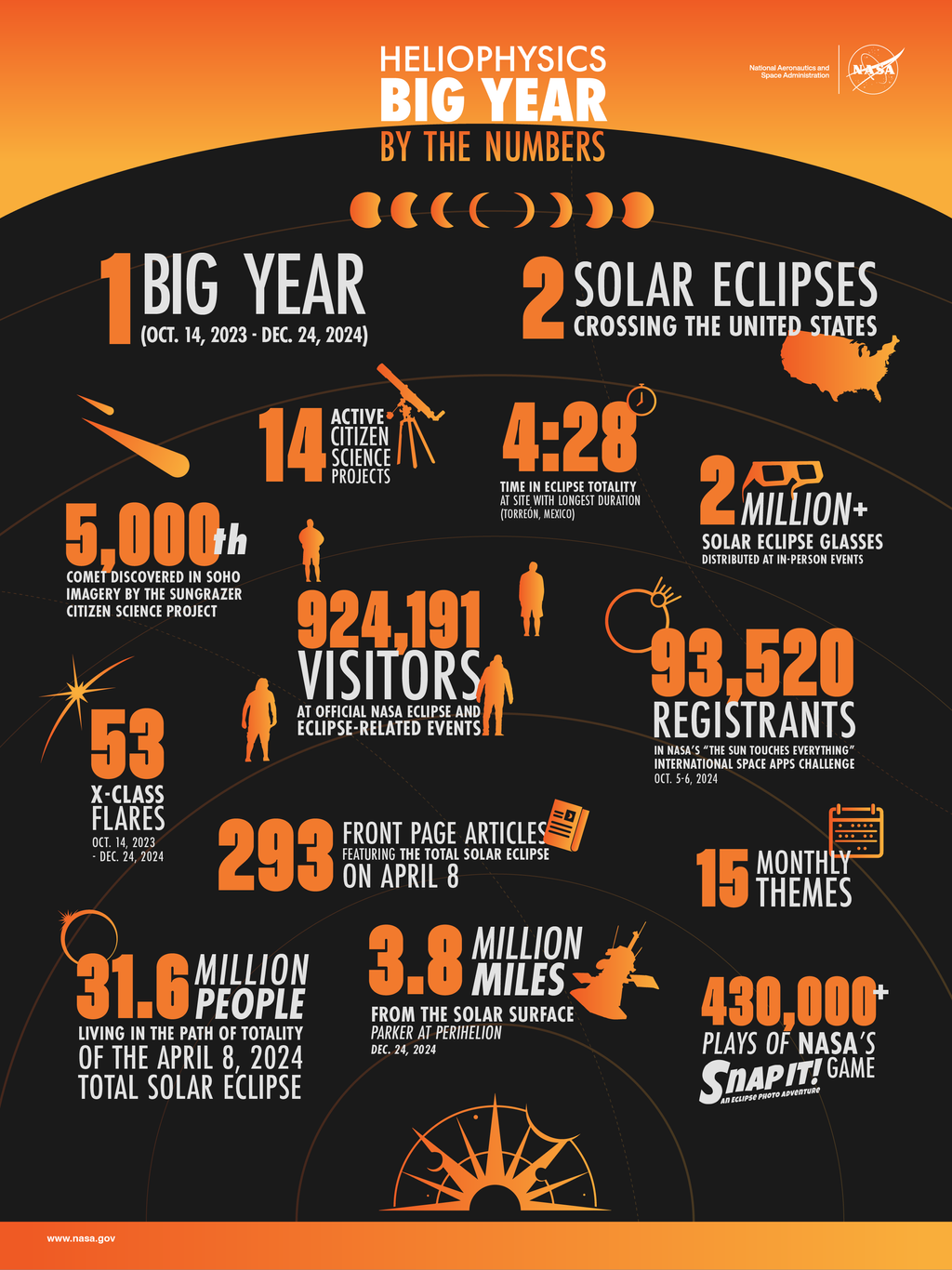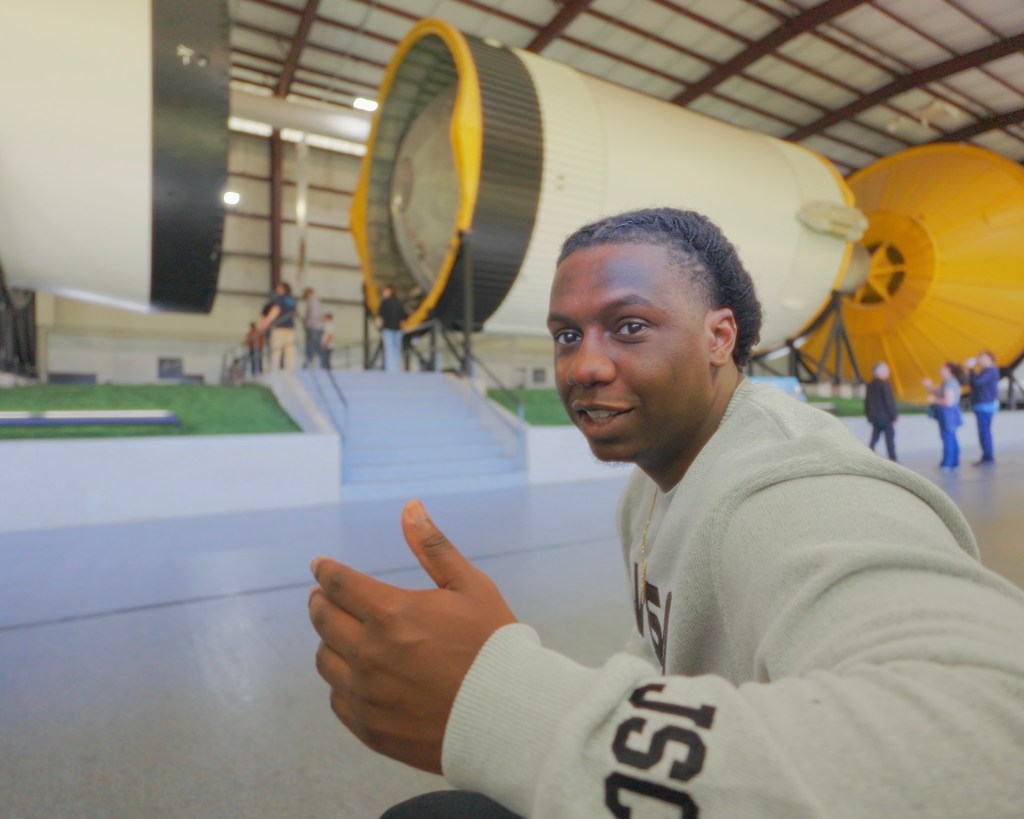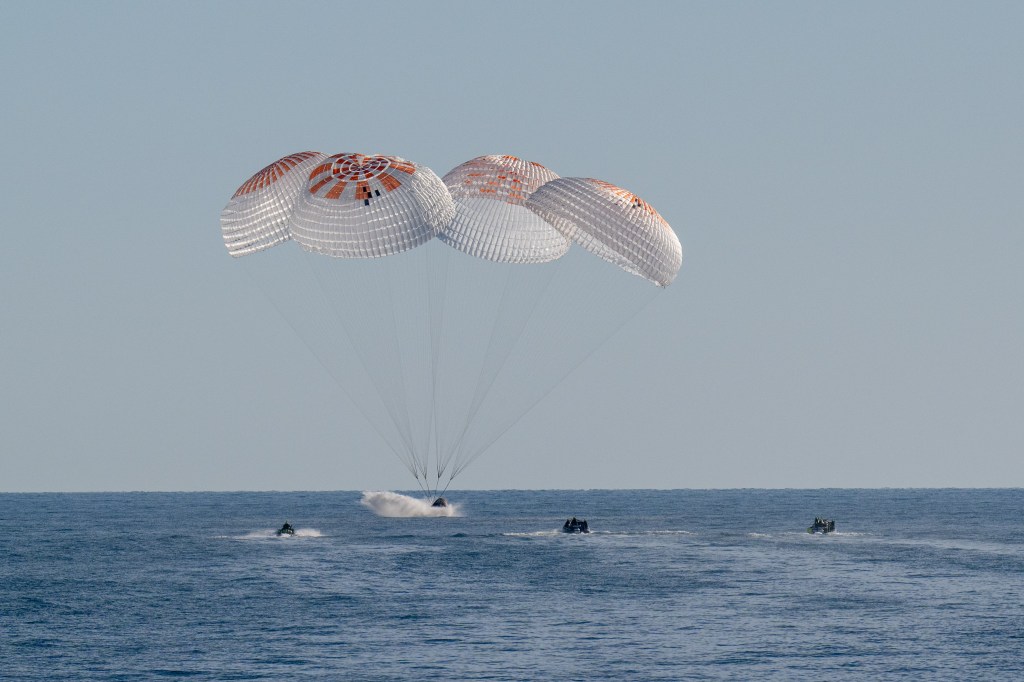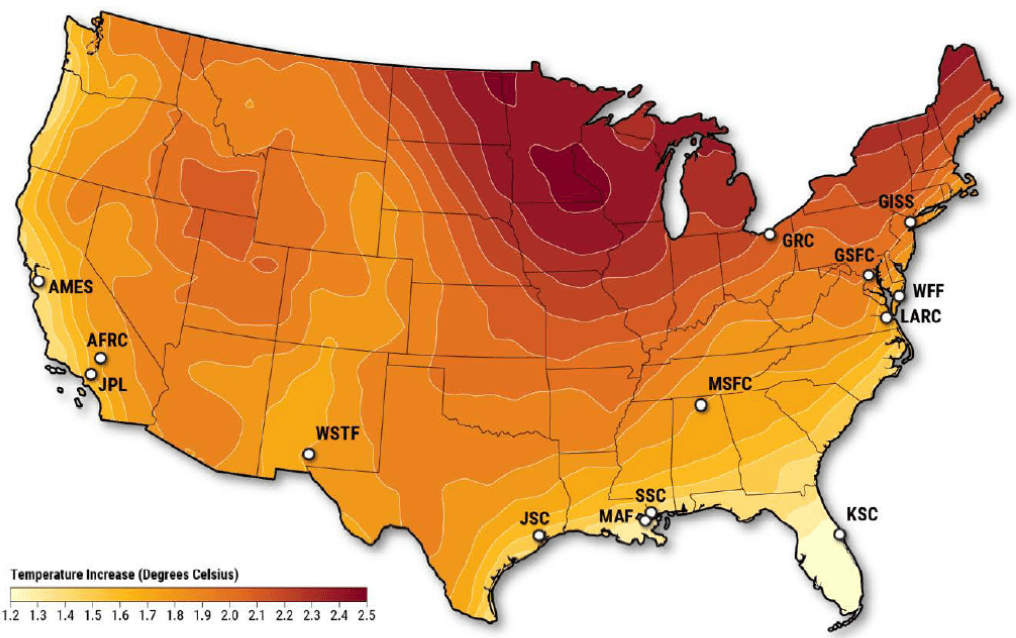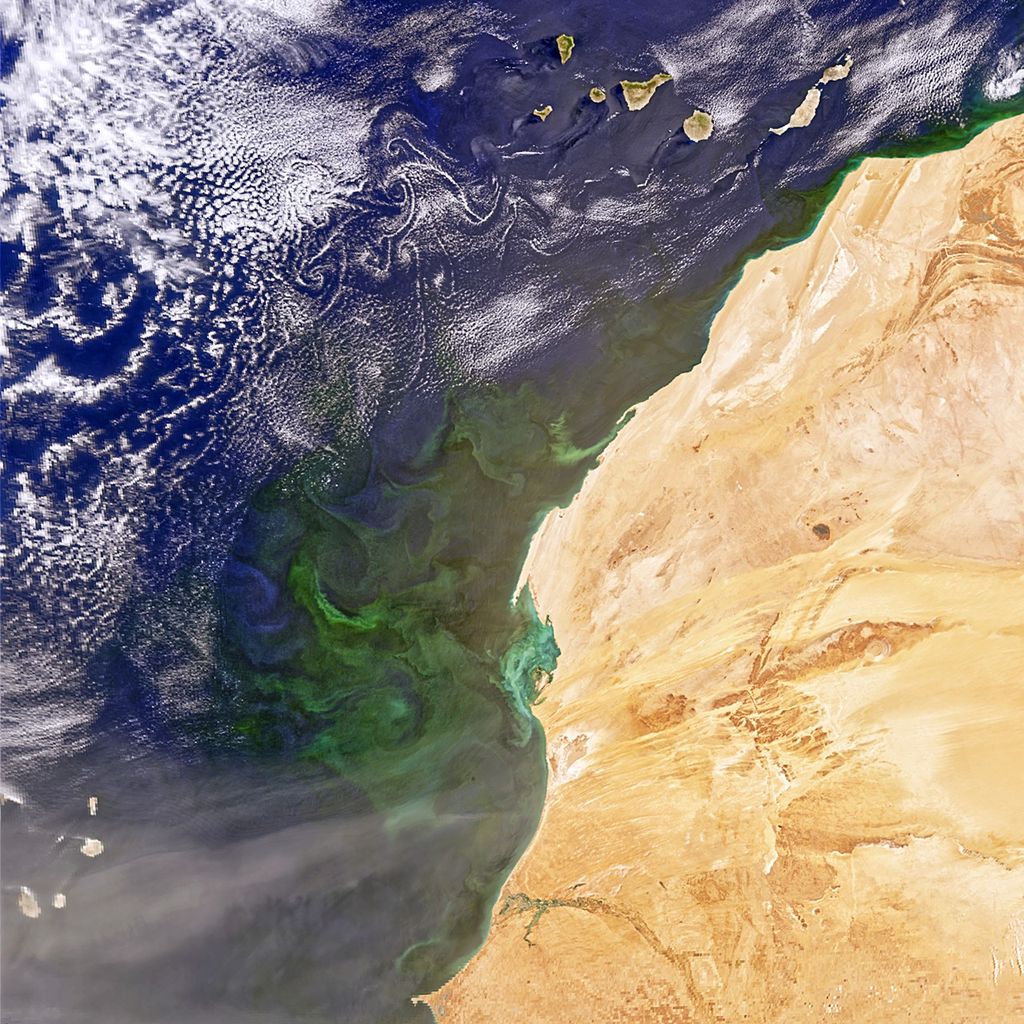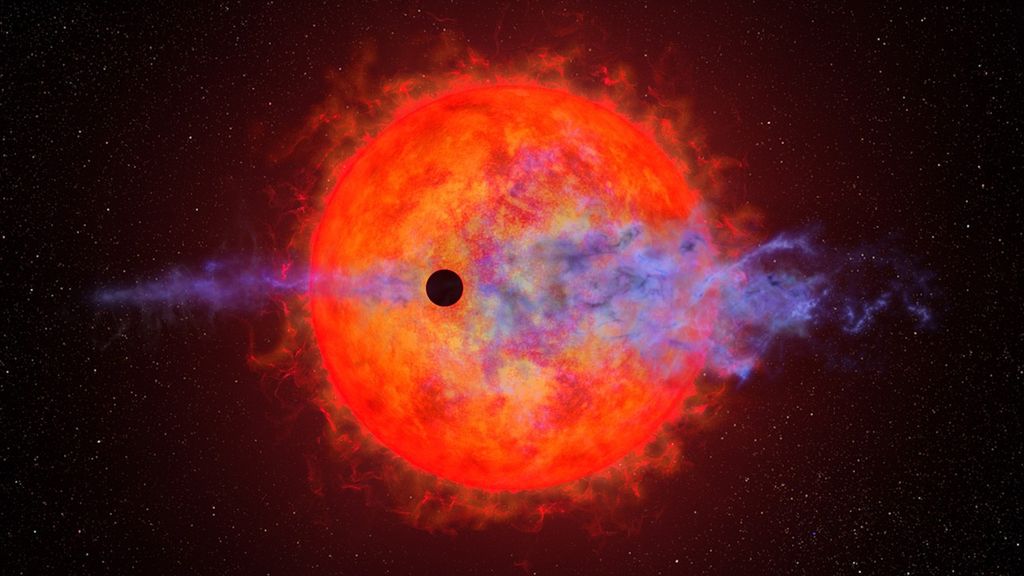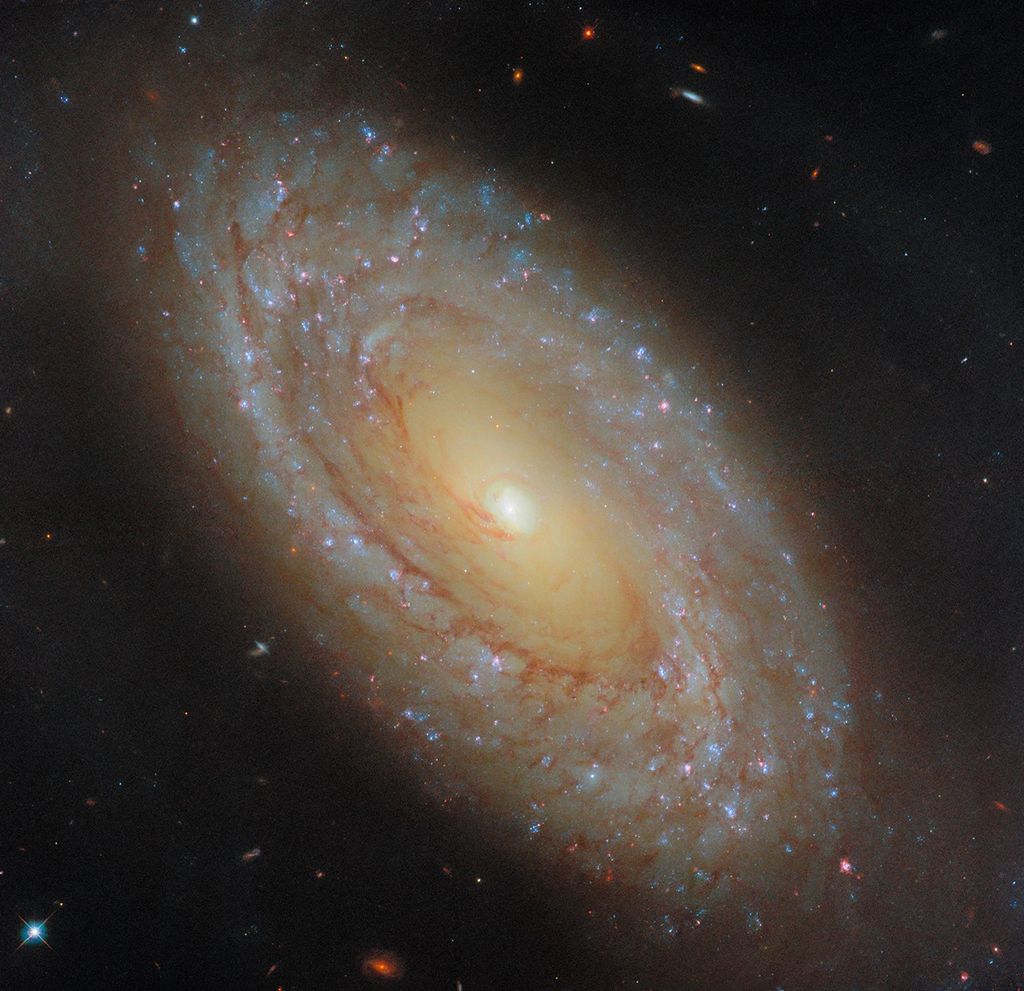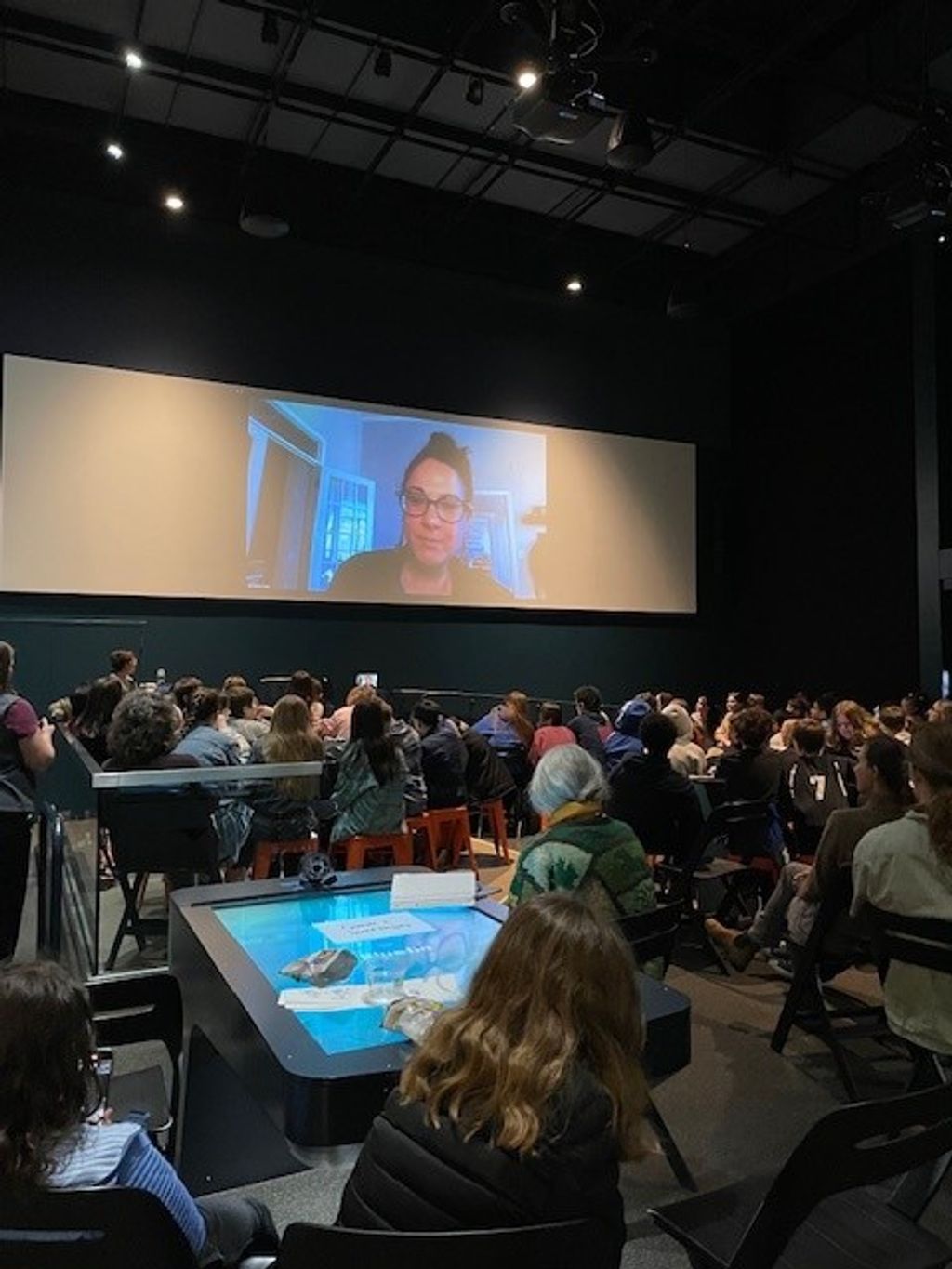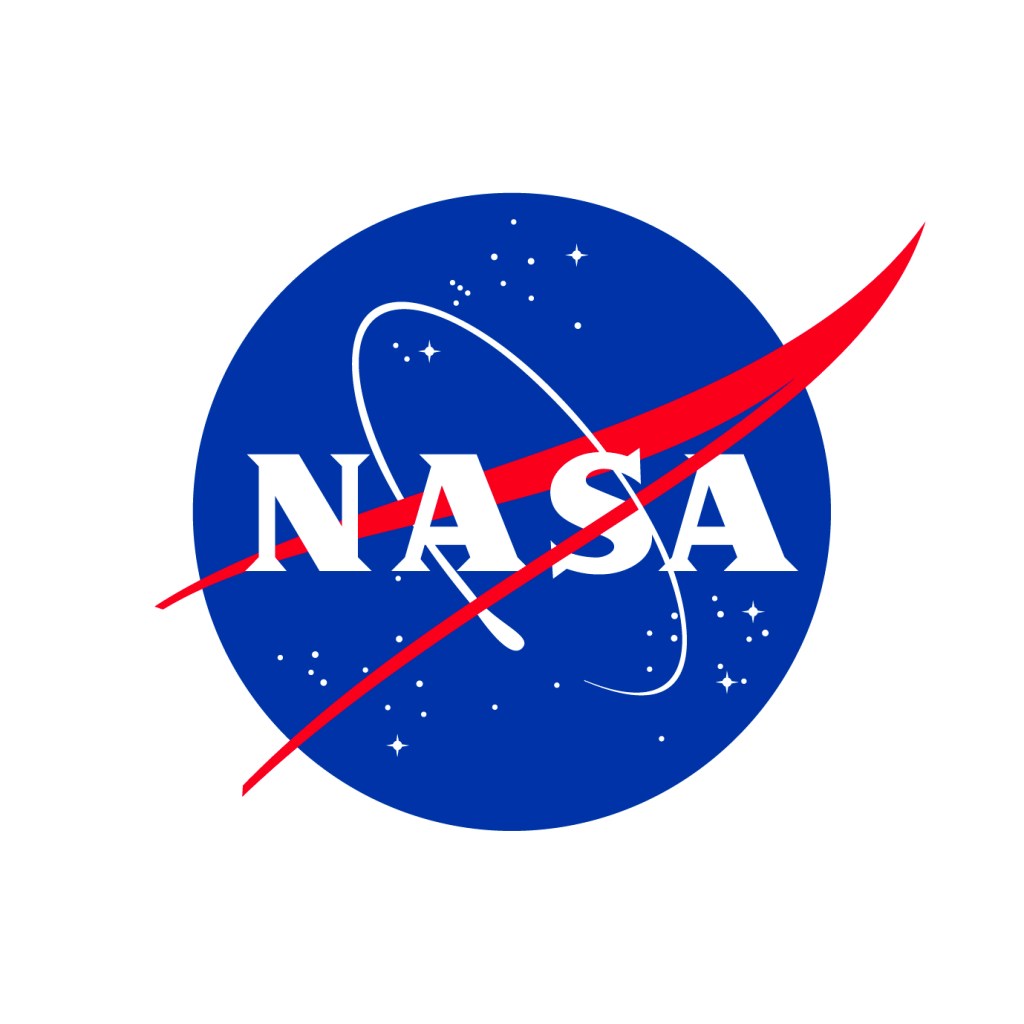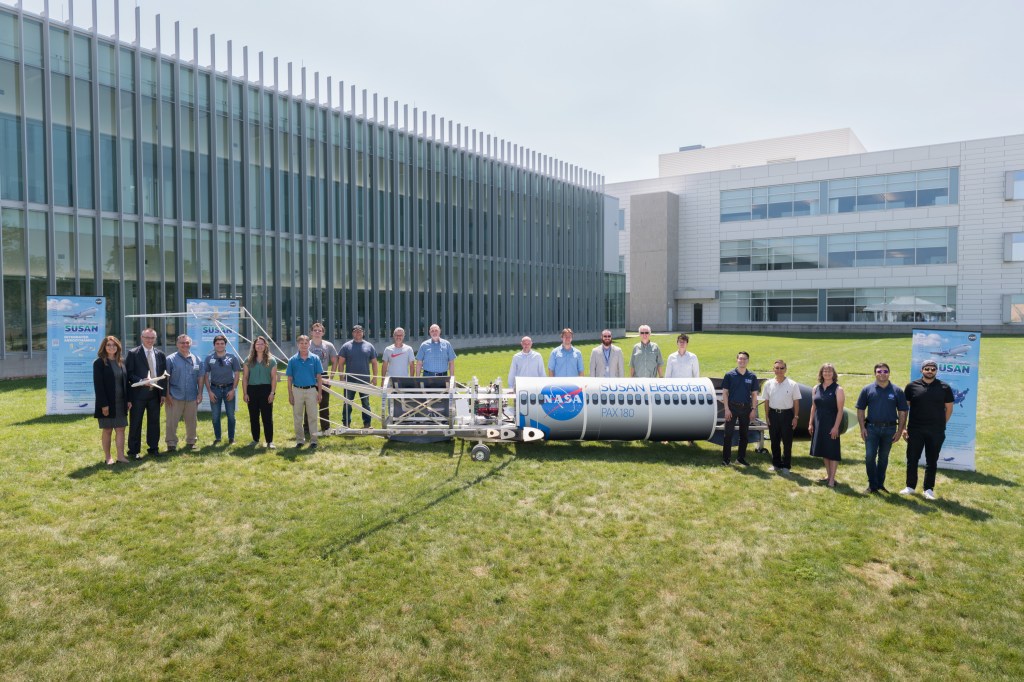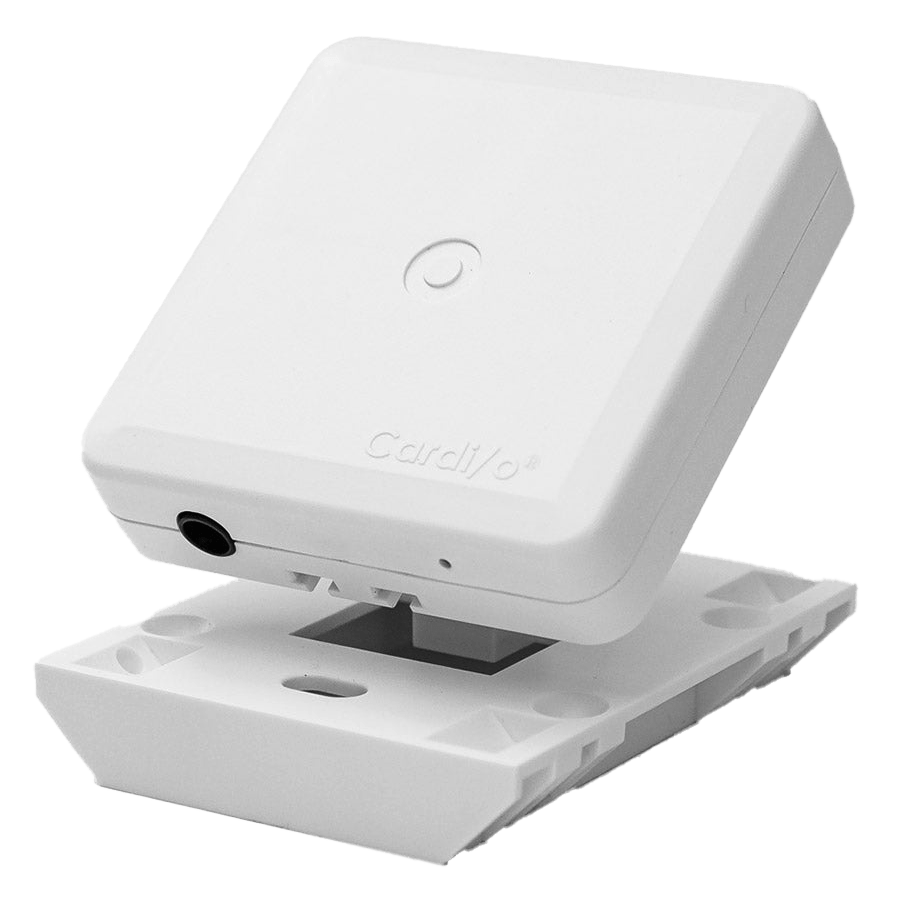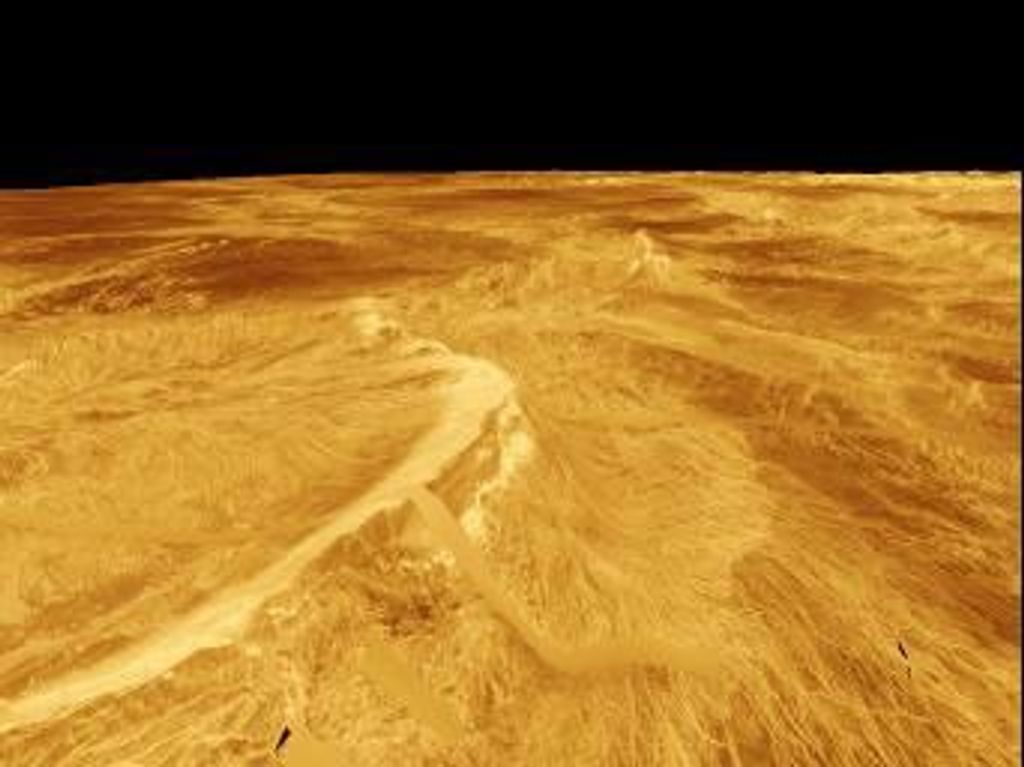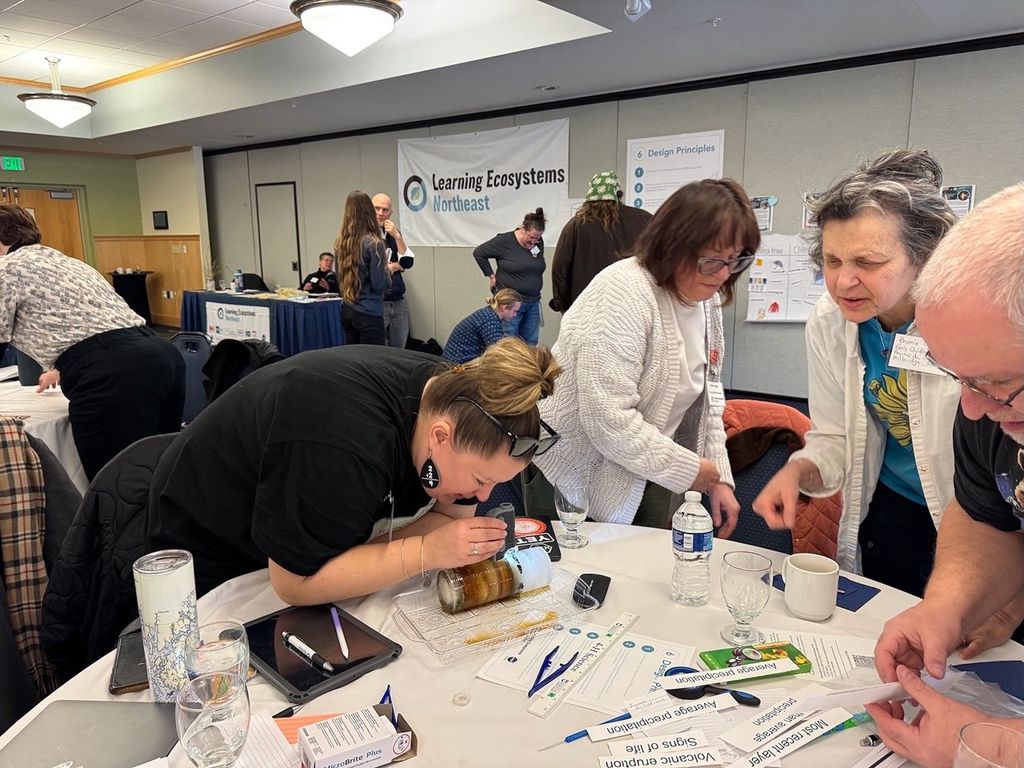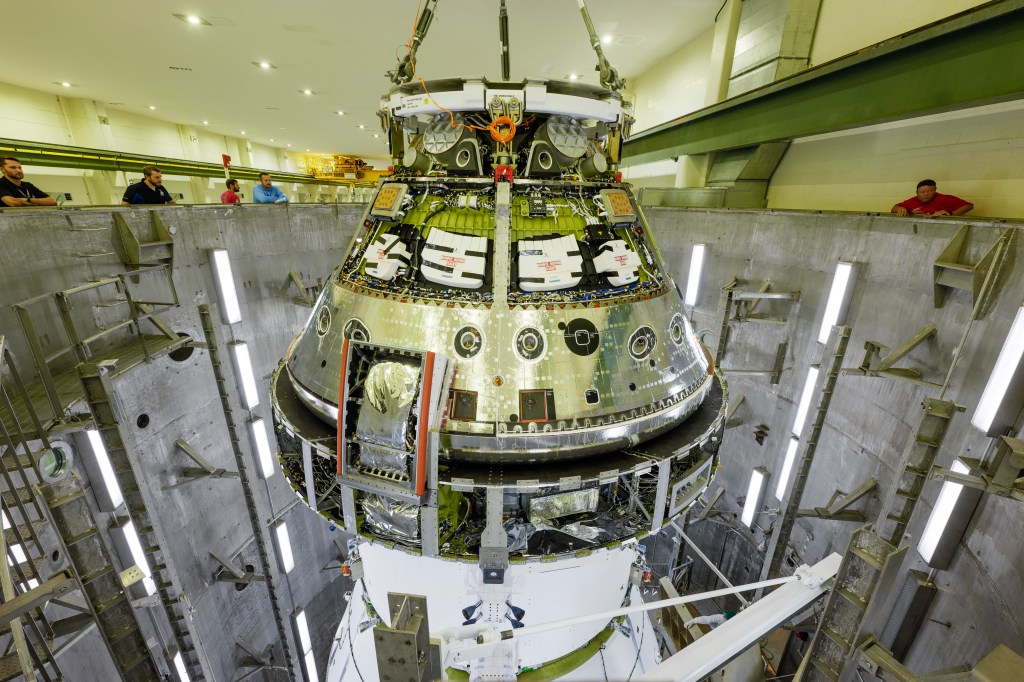Pluto: Ultraviolet Amazement
Eric Schindhelm is a research scientist at the Southwest Research Institute in Boulder, Colorado. He supported the Pluto system encounter in summer 2015 as part of the Atmospheres team for New Horizons.
I was very fortunate to participate in the New Horizons Pluto encounter last summer, supporting the Atmospheres science theme team.
I arrived at the Johns Hopkins Applied Physics Laboratory in Laurel, Maryland—home of New Horizons mission operations—a few weeks before the historic July 14 Pluto flyby. My job was to prepare to analyze data from the Alice instrument, a sensitive ultraviolet imaging spectrometer designed to probe the composition and structure of Pluto’s atmosphere. While a spectrometer separates light into its constituent wavelengths (like a prism), an “imaging spectrometer” like Alice separates the different wavelengths of light and produces an image of the target at each wavelength – so we were really looking forward to some incredible and valuable data.
Over the following weeks, as we approached the Pluto system, the Ralph and Long Range Reconnaissance Imager (LORRI) instruments returned increasingly amazing images and spectra. From the cracked and cratered surface of Pluto’s largest moon, Charon, to clear compositional differences across Pluto itself, these icy worlds at the edge of our solar system were turning out to be even more interesting than we expected. To be honest, I was starting to get a little jealous of the results pouring in from LORRI and Ralph. When would we get to see Pluto appear in Alice data?
The challenge was that at far-ultraviolet wavelengths (550 to 1,850 Angstroms), Pluto and Charon are only visible in reflected sunlight, and the sun is particularly faint at those wavelengths. By contrast, the sun is much brighter at the visible and infrared wavelengths that LORRI and Ralph use. We made some calculations about when we should get our first glimpse of Pluto in Alice data and the result turned out to be on Sunday July 12, just two days before closest approach!
When that Sunday evening came I kept checking the server to see if the data had reached the ground and gone through the data-reduction pipeline. Before too long I saw the data and downloaded it to my computer with anticipation. I used an adjacent row on the detector to determine the background to subtract, producing the plot below with an obvious surplus of photons at higher wavelengths.
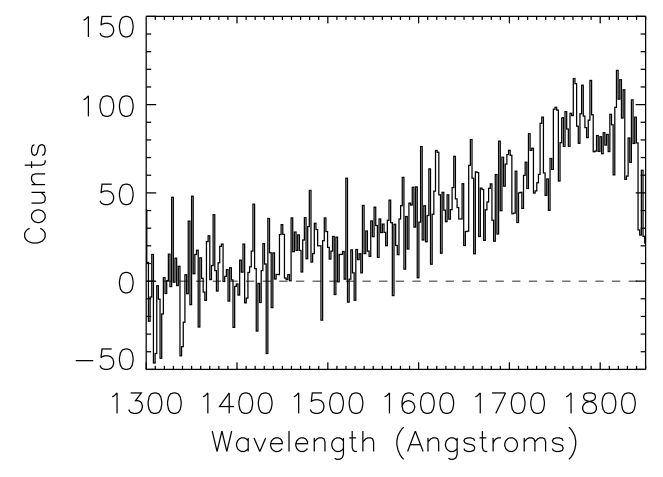
The variation of counts from 1,300 to 1,500 Angstroms gives you an idea of how ‘noisy’ the data was at the time, but longward of 1,500 Angstroms there was clearly a signal from Pluto. Pluto’s ultraviolet signal was rising out of the noise! While spectra are not as immediately aesthetic as images, there was a certain beauty to these data – these were the first far-ultraviolet photons from Pluto ever to be detected by humans. This cannot be done from Earth with the tools anyone has available – the signals are too faint. You have to send a spacecraft to Pluto to get data like this, which are useful for determining the composition of Pluto’s surface and atmosphere. And that requires quite a bit of teamwork to design, build, and launch a spacecraft to fly all the way to the outer solar system. When I saw this on my computer, I knew that the New Horizons team had succeeded and recorded the first far ultraviolet spectra of Pluto!
A few minutes later, a large group came back from dinner, and among them was Annette Tombaugh Sitze, daughter of Clyde Tombaugh – the man who discovered Pluto in 1930. They were at our hotel (where I was working) to socialize, but I just had to show off New Horizons’ latest find. Annette was excited to see her father’s planet in the far ultraviolet for the first time, and related how he used to teach her about astronomy when she was a child. At the time, my wife was pregnant with our first child, and I was struck by a great sense of continuity in the human experience of exploration and understanding. It was fascinating to see the New Horizons spacecraft turn the Pluto system from a few points of light into a complex and dynamic system of worlds. I’m grateful to have been a part of that and can’t wait to tell my new son about it when he grows up.
Before I go, I want to mention that –in addition to the New Horizons data –we were awarded time on the Hubble Space Telescope to look at the same side of Pluto and Charon that New Horizons viewed as it flew past, using the Space Telescope Imaging Spectrograph to obtain mid-ultraviolet spectra from 1,850 to 3,200 Angstroms. The sun is much brighter here than at the far-ultraviolet wavelengths, so Hubble is capable of seeing Pluto in this wavelength range all the way from Earth — 3 billion miles away. The Hubble data bridge a gap of spectral coverage between what Alice and Ralph cover, allowing us to check close-up spectra obtained by New Horizons against those observed at Earth. The spectral signatures due to Pluto and Charon’s surfaces should be consistent across all wavelengths. Stay tuned for those results!
